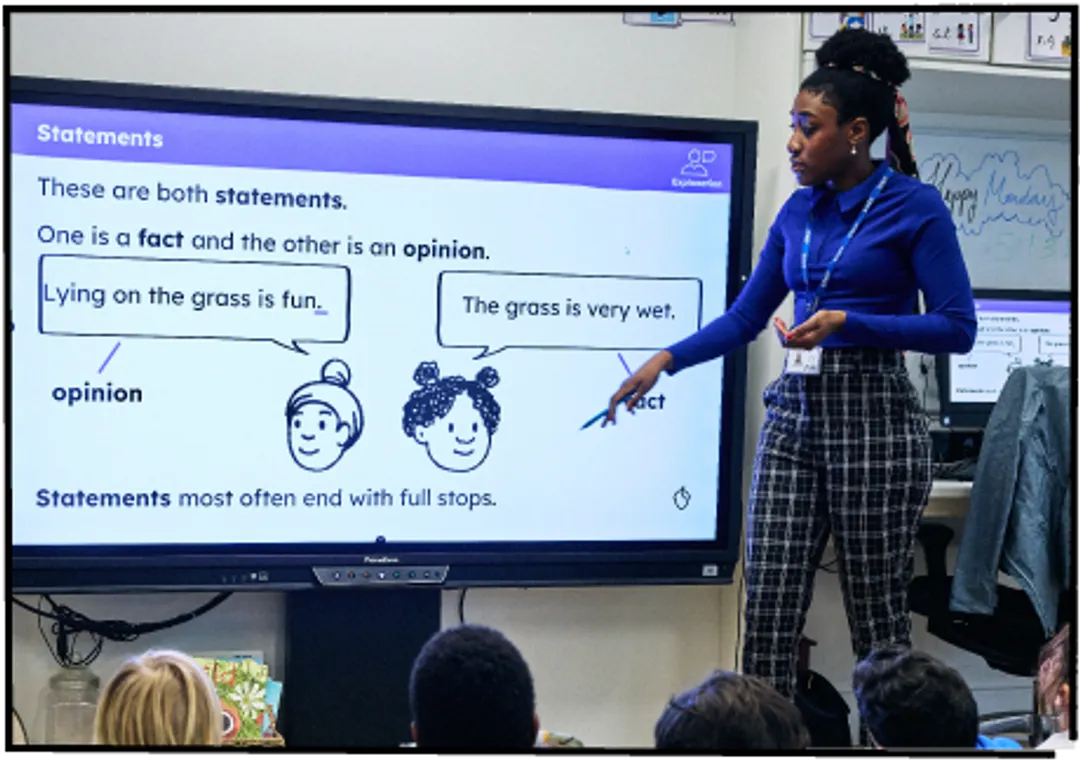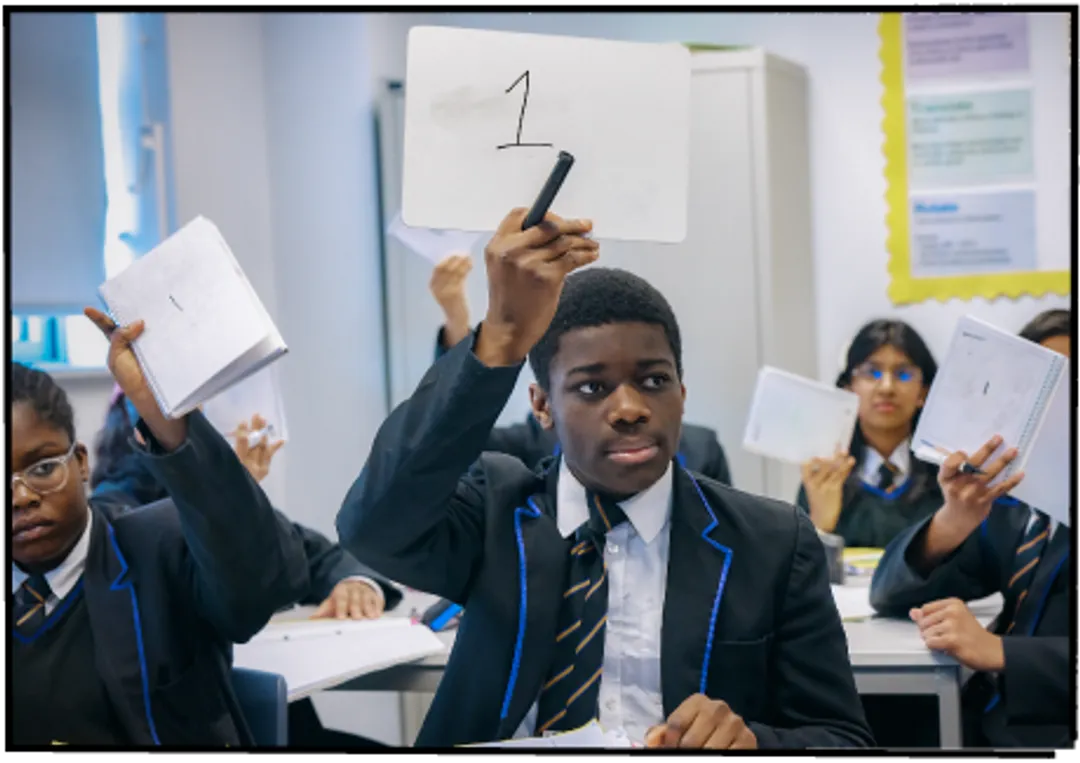How to plan a lesson: a helpful guide for teachers
Whether you're an ITT, an ECT or a teacher with many years of experience looking for a fresh perspective on lesson planning, dive into our collective expertise from across the sector.
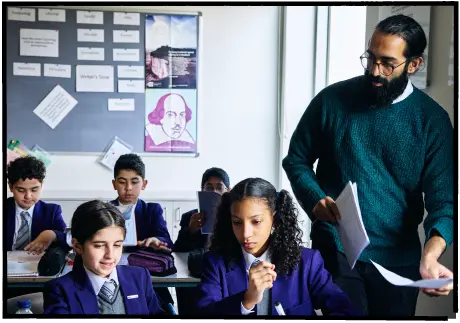

Welcome
We’ve pooled the knowledge of experts from across the teaching community in one place. From high-level to everyday lesson planning and resourcing, it’s all right here, created by experts.
We also have thousands of teaching resources and curriculum plans across national curriculum subjects. Whether you’re creating new lessons, refreshing your approach, or solving a last-minute challenge, our resources give you a strong foundation that means you get there faster.
Read on for a full guide to lesson planning, plus tips on how to use our resources to save yourself time.
(upbeat music)
Our mission here at Oak National Academy
is to support great teaching.
We do that through two goals.
First is we are aiming to lower teacher workload,
and we're trying to do that
by providing really high quality starting points
for your lesson planning through our teaching resources,
slide decks, quizzes, and worksheets.
Second, we're helping improve pupil outcomes
by providing access to really high quality curricula.
There are two unique things about Oak National Academy.
First, and it's a first,
we're creating curricula for key stages 1 to 4
across all of national curriculum subjects,
and that includes thousands of slides,
worksheets, and quizzes,
to use as a high quality starting point
in your lesson planning.
And second, we are creating a video library
of teachers teaching all of that content,
which is a really powerful resource for ECTs,
non-specialists, and to use a cover,
How to write a lesson plan: what are the basics?
First things first. Where does your lesson sit within the planned curriculum?
It’s important to know what concepts, ideas and connections you want your pupils to develop over time so that you can plan the steps to make this happen.
Your lesson should reflect a small step that is part of a wider coherent curriculum plan. View our curriculum plans to see what units make up our curriculum and what lessons make up our units, all carefully thought through to build pupils' knowledge.
When planning a lesson, you will want to think about your school’s expectations for what happens in a lesson. These might include:
- How to start a lesson
We suggest beginning with a starter quiz to activate prior knowledge. - When to build in explanation, checks for understanding and practice
These three steps and their order are really important. All of our teaching resources have checks for understanding following an explanation so that you can quickly assess if your pupils have understood your explanation. Finally, practice consolidates this knowledge. - Quizzing
Our teaching resources include an exit quiz so that you can check pupils' understanding at the end of a lesson.
However, it’s really important to check what your school expects lessons to look like. These are some of the foundations you could use to start your planning.
Are you already confident about where the lesson sits within the curriculum plan? Let’s jump straight into the planning basics, including how to plan a lesson and how long this could take you.
Deciding what to put into your teaching lesson plan
If you’re using a lesson plan to guide your classroom practice, remember that the most important part of the process is the thinking that goes into it.
Only you can decide what is right for your lesson plan, as only you know your school and your pupils. If you’re happy about where your lesson will sit within the school’s curriculum plans and units of study, you might want to consider these factors when putting a lesson plan together:
- Your school’s policy
Every school will have different expectations for what lessons will look like because each school will have its own approach to curriculum. Check your school’s policy to make sure you’re meeting these requirements when planning. - The confidence and strength of your pupils
What is their prior knowledge? What are they building towards? And, what is the classroom dynamic? All of these could inform how you plan your lessons. You may also consider whether you have any support available in the lesson, such as a teaching assistant, and how they can help you. - Lesson length
This is an important logistical factor. You will want to avoid overrunning or underestimating the length of the lesson. - Subject knowledge
Nobody can be an expert on all things. But, you will need to make sure knowledge is secure when you start teaching a new topic or subject. You could use our resources to upskill and close knowledge gaps. You can also read further advice about how to build confidence when teaching a new subject.
“As a newly qualified teacher I found having a structured path of lessons to teach a unit really helped with the coverage of the genre and your resources are easily adaptable to what I am teaching.”
Abby Le Roux, Year 5 teacher
Learning and lesson objectives
Firstly, what are ‘learning and lesson objectives’? We call them ‘learning outcomes’ and they are the skills or knowledge your pupils should have gained by the end of your lesson. Your school or educational setting might call them something slightly different.
Creating clear learning outcomes is crucial to make sure there's a cohesive and, most importantly focussed, learning journey through the lesson. If you know what you’re aiming to achieve when planning for your pupils, this can help secure clear outcomes and successes.
Need to write a learning objective? Search for the topic or keyword and explore our teaching resources. There, you'll find examples of learning outcomes, just like the one in the image below, that might just inspire your own.
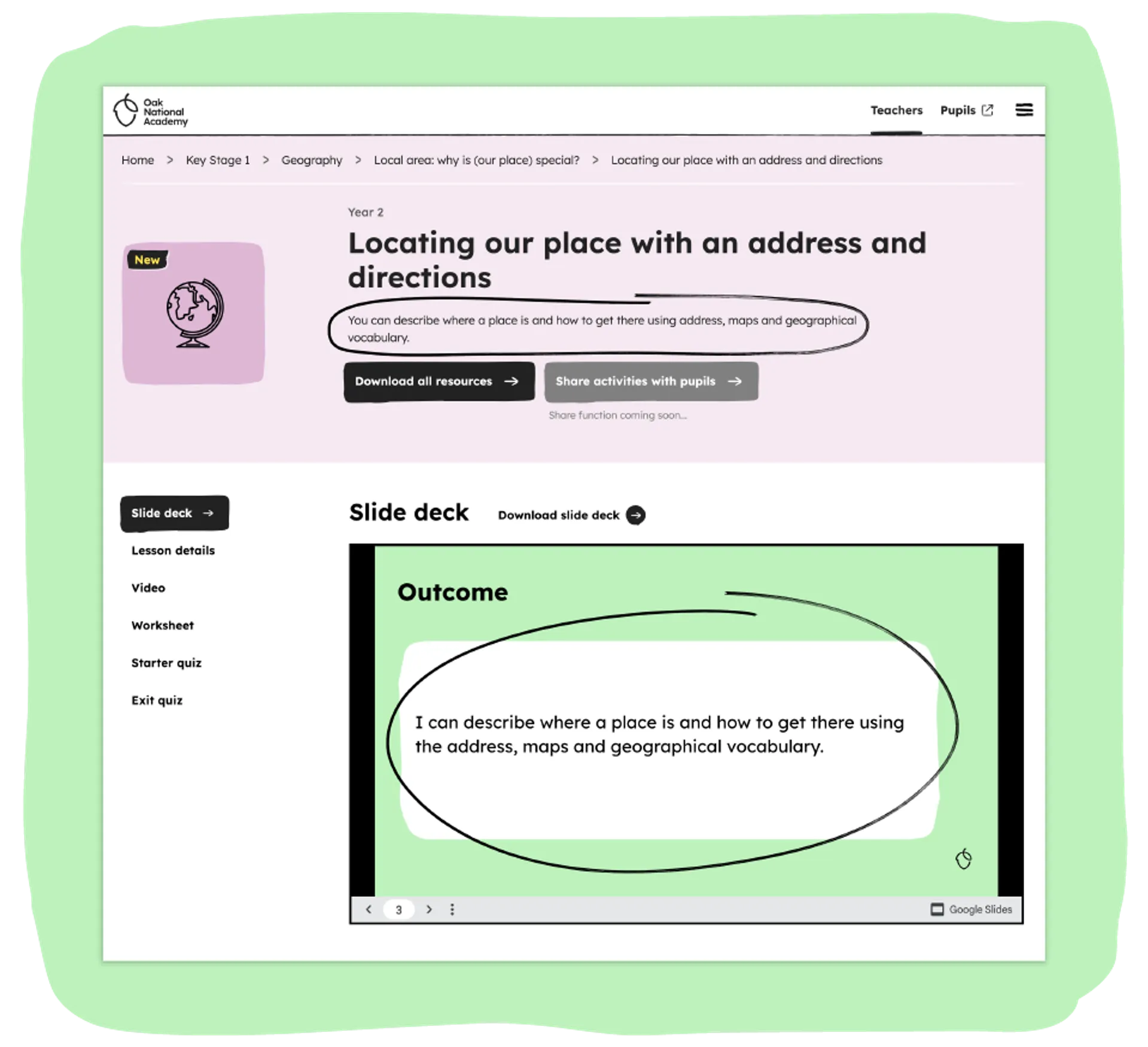
Interested in learning more about how we can help you with lesson planning? Sign up below to be kept updated on our latest curriculum and AI developments and get other helpful content by email. Unsubscribe at any time. Read our privacy policy.
Sign up for updates
Creating your lesson plan structure
When planning your lessons, you might need to adapt lesson structures, resources and approaches to meet the needs of your pupils and your own planning schedules.
For example, you might be introducing a new topic and want to hook pupils in. In this case, you might alter the usual cadence of the lesson as you get started on something completely new.
If you’re in the flow of planning, you might find that having an outline or standard template and structure helps you move through things more quickly, in addition to providing pupils with familiarity and routine.
Alternatively, you might want to update your lesson objectives or learning outcomes and tweak resources so that they reflect these priorities.
Explanation and modelling in teaching
Explanation, modelling and checks for understanding, are important when teaching any subject and phase. But, what is modelling?
Modelling is an impactful strategy to include in your explanations for pupils. It means showing the pupils exactly how to achieve skills or knowledge by demonstrating it in front of them.1
It’s good to know how to make meaningful models for your pupils, and particularly how to model a difficult concept, as pupils will need the most support to unlock this learning.
Carefully planned modelling can even help you to pre-empt and expose common misconceptions, particularly where a topic is difficult or challenging for your pupils.
Want inspiration? Alongside our teaching resources, we include a video of an experienced teacher delivering the lesson using the resources.
Practice or task-based learning
‘Task-based learning’ is the practice that your pupils do in order to consolidate your teaching. Your pupils will learn over time, through carefully sequenced concepts and ideas and repeated practice.
These concepts and ideas need to be broken down into smaller chunks. That’s where your individual units and lessons come in. Your objectives for these feed into the bigger picture. These units and lessons are the small steps that build towards the desired learning outcomes, and they need repeated practice to secure learning over time.1
We structure our resources around learning cycles, which use ‘practice’ repeatedly as a key step to promote pupil progress.
Of course, the practice within each subject and phase will look different, depending on your pupils, context and the curriculum you are following. Why not use our worksheet tasks as a foundation for your lesson planning or for inspiration before doing it independently?
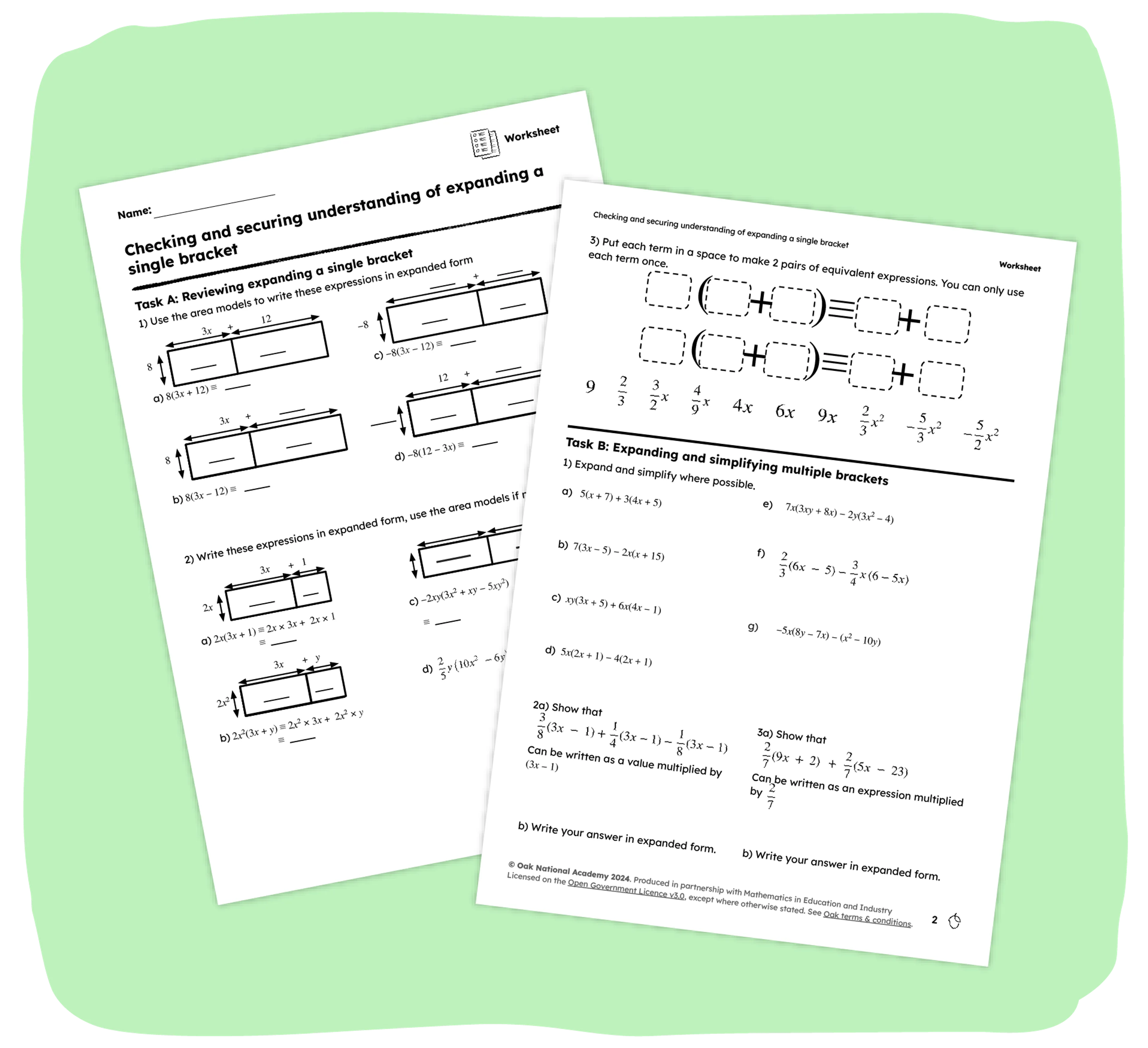
Checking for understanding
When you’re teaching a lesson, it’s important to know that your pupils understand what you are delivering. But, how do you check for understanding?
We suggest that you check for understanding after each explanation. After all, it’s really important that your valuable time is maximised and pupils are able to understand everything you’re sharing with them.
Checking for understanding regularly throughout the lesson allows you to make the most of your time and theirs. It can capture misconceptions before they become embedded, reinforce pupil progress and help them to access the next steps of your subject curriculum.
Want to see an example? Look out for the ‘check’ icon in our slide decks for a suggestion of how you might check for understanding in the lesson after a teacher explanation.
Scaffolding
All teachers support pupils of different abilities. Each pupil has their unique strengths and weaknesses, in addition to trends that you might notice across a class or even whole cohorts, such as a year group.
To help your learners achieve the best possible progress on their learning journey, you’ll want to adapt your lessons for your classes. For pupils or classes that need extra support, you might want to use scaffolding.
Scaffolding in an educational context refers to the extra steps or support your pupils might need to reach the desired educational outcome. They are the ‘temporary devices and procedures used by teachers to support students as they learn strategies’.1
The Education Endowment Foundation2 defines it as ‘a metaphor for temporary support that is removed when it is no longer required’.
This could involve adding additional practice, changing the pace, adapting your class explanation, or using models that are broken into more chunks.
Classroom ideas: making the most of our resources
Getting to grips with teaching can be challenging. Whether you’re starting a new school, teaching a new topic, planning a curriculum or refreshing units of study - we’ve got you covered.
We’re here to guide you with our expertise so that you can feel confident that the decisions you make are right for you and your pupils.
That’s why, alongside the slide decks, worksheets and quizzes we provide, you can also find a ‘teacher tip’ and ‘common misconception’ to help guide your instruction.
Reflection
You’ve got an excellent curriculum in place and your teaching resources are prepared. Now it’s time to head into the classroom. Good luck!
Planning lessons and teaching is an ever-evolving process. As you progress through the year, you should continue to ask yourself: what is working, and what could be even better? It might be small tweaks to the strategies you are using in the classroom and the way you are explaining concepts to your pupils, right through to bigger ideas about your wider curriculum.
Want more helpful tips and guidance on lesson planning and teaching? Sign up below to be kept updated on our latest curriculum developments and other helpful content by email. Unsubscribe at any time. Read our privacy policy.
Sign up for email updates
Using AI in teaching
How to plan lessons with Aila
AI tools can help teachers in numerous ways, including saving time on tasks like making resources or quizzes. However, it’s important to carefully consider which AI tools are suitable for lesson planning.
What teachers should consider when using AI in education:
- How can I be sure that the AI tool will provide me with resources that are aligned with the national curriculum in England?
- How can I be sure the AI tool will produce resources that are safe and accurate to use in the classroom?
Meet Aila: your AI lesson planner
As an AI tool for teachers, Aila, our AI lesson assistant, is unique. It’s been built by a team of educators and AI developers, and designed with teachers in mind, to help them save time planning lessons and creating resources for their pupils and classroom.
Aila can transform your lesson prep and help speed things along —giving you more time to bring your lessons to life.
Okay, just the one lesson to plan today,
and we're done.
Shouldn't take too long.
Write people-friendly keyword definitions.
Decide on explanation key points.
Write some questions to check for understand, design tasks.
Write sentence starters for practise task for Jack.
Write model answers. Make a quiz.
Translate keywords into Spanish.
Create slide deck. Create worksheets.
Plan my delivery.
(gentle music)
How am I gonna get this done?
(computer dings)
Worth a try.
(keyboard keys tapping)
(bright music)
(keyboard keys tapping)
Whether it's creating bespoke resources
or helping you tailor your content to class,
Aila can help you speed things along.
Through an intuitive step-by-step process,
use Aila to build a tailor-made lesson plan and resources
entirely driven by you and adaptable to your class.
From reading age to where you're based,
Aila can help you make bespoke resources effortlessly.
You can use Aila to help you generate a lesson plan, slide deck, quizzes, worksheet, and so much more for any lesson, in any subject, in any key stage. Entirely driven by you, and adaptable to your class.
As you build your lesson in Aila, there are lots of things you can ask it to do. You can read our blog on eight things Aila can do to save you time lesson planning, which includes some great suggestions, including how to personalise lessons to local areas, and how Aila can help you support pupils with SEND.
Find out more about what Aila does and how it works by reading our handy guide, and make use of our ground-breaking tool to give you more time for quality lesson planning.
Latest lesson planning blogs
 Lesson planning
Lesson planning24 September 2025
Art and design at Oak: Our approach to imagery and references
Oak’s new art and design curriculum offers diverse artist references across times and styles. It provides inspiring examples to spark pupil's creativity and support teachers with a broader range of artists, while respecting permissions.
 Lesson planning
Lesson planning24 September 2025
Teaching computing that matters
Technology shapes every aspect of life, and computing education must go beyond coding. Oak’s new curriculum, developed with the Raspberry Pi Foundation, offers free, adaptable lessons to help pupils think critically, act responsibly, and connect learning to the real world.
 Lesson planning
Lesson planning17 September 2025
Transform food education for your pupils
Food is more than fuel: it’s culture, creativity and community. Oak’s new cooking and nutrition curriculum, with free adaptable resources for key stages 1-3, helps pupils explore these connections and build essential life skills.
 Lesson planning
Lesson planning15 July 2025
Teaching online safety in schools: tackling real risks to help pupils stay safe
From toxic algorithms to online misogyny, young people are facing growing dangers online - and teachers are on the front line. Oak’s new online safety lesson resources are here to help you teach online safety in schools, with confidence and clarity.


